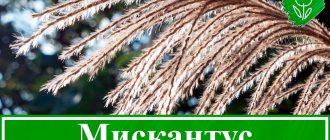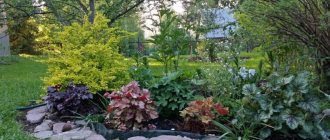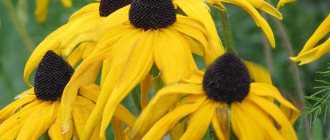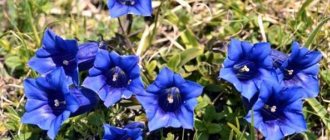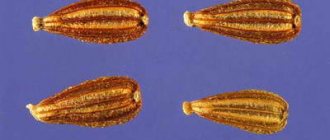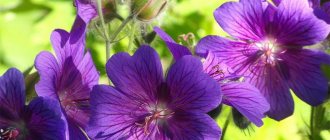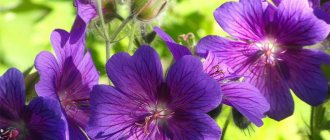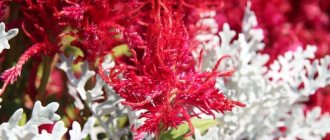Physostegia is a beautiful, unpretentious perennial that belongs to the Lamiaceae family. Many gardeners choose it for their flower gardens, and florists like to add it to bouquets and compositions. Tall flower stalks with numerous lush and bright buds look very impressive.
The homeland of these plants is North America. In nature they grow near bodies of water, near swamps. There are about 12 species in total, but only one is grown decorative in gardens - Physostegia virginiana. Its flowers are honey plants.
Physostegia. Description of the plant
Physostegia is a bright representative of the Lamiaceae family. In its natural environment, it can be found in the meadows of North America. And in cultivation, the plant is grown to decorate flower beds, garden paths and park areas, and to create mixborders. Physostegia is a herbaceous perennial plant. It forms dense clumps, consisting of strong, erect stems, up to 1.2 m high. The rhizome of the crop is creeping and quite aggressive. And if the growth of physostegia is not controlled, it will grow to its maximum area, displacing other plants from it.
The leaves of the crop with a lanceolate or oblong shape are located on the shoots in pairs. They are colored light green. Spike-shaped inflorescences reach 30 cm. They consist of 1- or 2-hollow tubular, two-lipped buds, painted in white, pink or lilac tones. The flowering period of the crop begins in early July and lasts until September. After it, the plant forms a fruit - a nut.
Interesting varieties with photos
Thanks to the tireless work of breeders, flower growers have access to several hybrid varieties bred on the basis of Physostegia virginiana.
Alba
Physostegia alba is very attractive, distinguished by its noble, elegant appearance and stable, long-term flowering, which begins in the second half of July and ends at the end of September.
Its erect stems, up to 0.7 m high, are topped with large inflorescences consisting of small white flowers and will decorate any corner of the garden.
Attention! The plant quickly takes over the surrounding space.
Bouquet of roses
The attractive lilac corollas of this perennial will decorate a large flower bed. The plant is unpretentious and hardy, and tolerates cold winters well.
Variegata
What attracts attention to this variety is not only the pleasant pink color of the small tubular flowers, but also the bright light stripe edging the leaf blades.
Crystal peak white
This variety of physiostegia is distinguished by its small size and bright white pure color of the petals.
Vivid
The height of the stems does not exceed 0.7 m, which makes it possible to plant Physostegia as a background plant. Its purple-pink inflorescences will effectively set off the lower flowers on the site.
Summer Spire
A very pretty variety with pink flowers. The height of erect shoots does not exceed 0.8.
Other varieties
Scientists have identified the following varieties of wild plants:
- Physostegia angustifolia - physostegia angustifolia (narrow-leaved);
- P. correllii - F. corella;
- P. digitalis - F. digitalis;
- P. godfreyi - F. godfrey;
- P. intermedia - F. intermedia;
- P. Ledinghamii - F. ledinghamii;
- P. leptophylla - F. thin-leaved;
- P. Longisepala - F. longisepala;
- P. Micrantha - F. Micrantha;
- P. Parviflora - F. Parviflora;
- P. Pulchella - F. Pulchella;
- P. purpurea - Physostegia purpurea.
Among the popular hybrids suitable for growing in a flower bed are the following:
- Galadriel;
- Miss Manners;
- Olympic Gold;
- Red Beauty;
- Rosea;
- Schneekrone;
- Summer Snow.
Types of physiostegia
There are 3 types of plants, but only Physostegia Virginiana is grown in culture.
And the best varieties are considered to be the following plant varieties:
- Physostegia is white. The culture reaches up to 80 cm in height. Its spike inflorescences, up to 30 cm long, are densely covered with flowers. Each of them reaches 2-3 cm in length. The petals are painted snow-white. This type of plant thrives in maximum light and moderately moist soil.
- Pink Queen. The height of the plant's stems reaches 75-80 cm. Its apical inflorescences are spike-shaped and colored in a rich pink hue. They open completely in water, so the flowers are suitable for cutting and making bouquets.
- Miss Manners. A compact variety, the height of which does not exceed 60-65 cm. Spike-shaped inflorescences reach up to 25 cm in length. They are painted snow-white. The variety is frost-resistant and can withstand up to -35 °C without shelter.
- Variegata. The variety reaches up to 90 cm in height. Its narrow, linear-lanceolate leaves have a white border along the edges. Inflorescences up to 30 cm long are painted deep pink.
- Alba . A tall variety, reaching up to 90 cm in height. It is distinguished by larger tubular buds collected in oblong inflorescences-spikelets. The petals are painted snow-white.
- Bouquet of Roses. The plant grows up to 1.2 m. This variety is distinguished by the bright lilac color of its petals.
Caring for physiostegia in the garden
Properly caring for these flowers is not difficult:
- Regular watering is required, but in rainy weather there will be enough precipitation;
- periodically carry out weeding and loosen the soil;
- to protect against weeds and preserve moisture, the ground around the bushes is mulched; before flowering, mineral fertilizers are applied;
- cut off dried leaves and stems in a timely manner;
- Organic fertilizers are not applied during the summer season - it is enough to do this in early spring and when preparing the plant for winter;
Plants planted with seedlings bloom within 2-3 years. In total, without replanting, bushes can grow for up to 5 years.
Then, to keep them in good condition, you need to plant them in other places (only after flowering).
If the soil is fertilized too much, the bushes can grow up to 1.5 m in height and grow strongly with shoots, drowning out other plants in the flower beds. If they are too tall or overgrown, they need to be strengthened with supports, tied up, and pruned, otherwise they simply will not support their weight.
Physostegia after flowering
After all the Physostegia inflorescences have faded, collect the seeds and trim the stems. But they should not be cut off completely, but leaving stumps.
Collecting seeds
In September, after flowering, you can collect the seeds. They are hidden at the bottom of the flower cups and are quite large. To prevent them from scattering over the site by self-sowing from the wind, it is better to remove them in advance and dry them, preparing them for sowing in a suitable place.
How to prepare for winter
Despite the fact that this plant is winter-hardy, in those regions where there are severe frosts, it is necessary to provide shelter for the winter. The trimmed bushes are covered with peat and humus, and on top with spruce branches. In the spring, during the first warm days, the cover must be removed so that the roots do not rot.
Conditions for keeping the plant in open ground
Physostegia, a photo of which is given in the article, is one of the most unpretentious plants. But without proper care, the culture will lose its decorative effect. And to avoid this, you will need to occasionally water and fertilize the plant, as well as choose the optimal place for planting it.
Lighting
Physostegia is a light-loving plant, and for it it is worth choosing well-lit areas or partial shade. In complete shade, the crop will quickly lose its decorative effect and may even die. It is also advisable to select an area for the flowerbed that is protected from the wind, since sharp gusts can break off the flower stems.
Temperature
Physostegia develops well at temperatures of +14…+25 °C. But it can also easily withstand the summer heat, but at such times you will need to water the crop more often. It is also a frost-resistant plant and can withstand temperatures as low as -35 °C. But if the winter turns out to be snowless, the plant may die. So it is advisable to prepare it for the cold period. To do this, you will need to trim the shoots of the flower, leaving stumps up to 5 cm long, and cover the bush itself with non-woven material, such as lutrasil, or sprinkle it with fallen leaves and conifers.
But you need to remove the shelter immediately after the temperature reaches above zero. Otherwise, the roots of the culture may be lost.
Humidity
Physostegia does not require high air humidity. But such conditions will not harm the culture. So it can be planted near bodies of water, and during particularly dry periods it can be sprayed with water from a spray bottle. But it is better to hold such an event early in the morning or at sunset. Otherwise, under the influence of the sun, the water drops will become very hot and cause a burn on the leaves and stems of the plant.
Soil and drainage
Physostegia takes root on any type of soil, with the exception of very clayey and depleted soils. But it is better to plant the crop on fertile, light black soil or sandy loam. The plant does not tolerate stagnation of moisture at the roots, so it should not be grown in lowlands, in wetlands and in places with close groundwater. It is also advisable to arrange drainage. To do this, at a depth of 40-50 cm, lay out a layer of broken brick, fine crushed stone or river sand.
Watering
Physostegia (planting and care, photos of the culture are given later in the article) refers to drought-resistant plants. And it is important to water it during especially hot and dry periods, keeping the soil moist and loose. When the soil dries out, Physostegia sheds its lower leaves, which negatively affects its decorative properties. And with prolonged drought, the crop may die. In spring and autumn, when the weather is cool, it is better to completely abandon watering. Indeed, in such conditions the plant can rot.
For irrigation, you can use water directly from the well. But it is better to preheat it in the sun so that the plant does not experience stress from temperature changes. It is advisable to carry out irrigation itself in the early morning or at sunset.
After watering or rainfall, it is important to loosen the soil in the flowerbed. Otherwise, a crust will form on it, which will block the access of air to the roots. You will also need to weed around young plants. To make caring for physiostegia as easy as possible, it is better to mulch the surface of the flowerbed with peat, compost or rotted manure. This layer will help keep the soil in the ground and prevent a crust from forming on its surface. Thus, the number of waterings and loosening can be significantly reduced.
Trimming and restrictions
Physostegia roots grow quickly, and in a short time the culture can cover a large area. And in order to limit the plant, it is necessary to dig pieces of slate, plastic or wooden fencing around the perimeter of the flowerbed to a depth of 30-40 cm. You can also plant shrubs in buckets without a bottom. To maintain the shape of the plant, it is necessary to regularly trim young shoots, as well as shorten shoots that are too elongated. It is also necessary to remove faded inflorescences, but at the same time you need to leave stumps 3-5 cm long.
If you cut the plant at the root, then next year its flowering will be less lush.
Agricultural technology
Planting physiostegia in unprotected soil
Adonis flower - planting and care in open ground
If you want to breed Physostegia, plant seedlings in open beds in the last ten days of May or early June. An unassuming flower is grown in a flowerbed that is illuminated by the sun. Partial shade is also suitable. He likes the soil to be moist, loose and enriched with humus. Sandy loam, loam or black soil are optimal.
Planting seedlings at intervals of 25 cm. The rhizome of Physostegia is aggressive: it grows quickly and displaces other crops from the flower garden.
To prevent negative impacts, limiters are installed. Flowers are planted in open soil in a container that limits the development of rhizomes: an old bucket or pan without a bottom, or a piece of pipe will fit.
Precautionary measures
The dishes are buried so that the thickness of the soil is from 20 to 50 mm from the top of the pot to the bed. Gardeners often dig fences made of wood or metal, pieces of slate, plastic around the perimeter of the flower garden, and bury them at least 30 cm into the ground.
Sowing physiostegia seeds in open beds
Planting material is laid before winter or early spring. The seedling method affects the endurance of flowers.
Growing seedlings
Planting of seeds occurs in the first ten days of March:
- sowing is carried out in boxes or individual cassettes with loose nutrient soil, buried 1 cm, covered with glass or polyethylene on top;
- seed germination is carried out in a warm room with good lighting and ventilation, watered regularly;
- wait for the sprouts, after 2 weeks, remove the glass or polyethylene;
Seedling technology
- the seedlings are protected from drafts and direct rays of the sun, the soil is periodically loosened;
- when 2 true leaves are formed, the seedlings are thinned, leaving a 10 cm interval between the seedlings, or they are picked into pots;
- They are transferred to the garden bed at the end of the spring season, the seedlings are hardened off 14 days before planting, and the seedlings are brought out into the shade of the garden plot during the daytime.
Watering and loosening the soil
Regular moisturizing is a mandatory procedure, especially during hot periods. The condition of the earth clod will indicate the need for watering. Avoid overwatering to prevent the development of fungal infections.
It is useful to loosen the soil after irrigation and rain. Experienced gardeners simplify crop care by sprinkling the beds with mulch.
Recharge and transplantation
If the soil is rich in nutrients, feed the physostegia once during the growing season. A comprehensive mineral supplement is just right. Fertilize the plant before flowering, combining it with watering.
Nutrition for physiostegia
The crop acquires a spectacular appearance in the second or third year of cultivation. Without replanting, the flower is grown for a maximum of 5 years.
The bushes are removed from the ground, divided and sent back to the flowerbed in the fall or spring.
Physostegia transplantation and care do not differ from the initial planting. The transplanted plant will need plenty of moisture. It is recommended to mulch the flower garden.
Trimming
Plants are suitable for cutting. Beautiful bouquets emerge from the flowering stems. For decoration, ears of cereals or foliage are added. The shoots are trimmed, leaving tall stumps. With the arrival of autumn, wilted stems are removed by collecting seeds. The ground part of the physostegia is cut off entirely for the winter.
Pests and phytodiseases
A distinctive feature of the flower is its resistance to pests and diseases. Although sometimes problems may arise.
Physostegia is often attacked by aphids. Parasites suck out plant juices. The result is yellowness of the flower, dropping of buds. They fight harmful insects with insecticides and biological products:
- Aktara;
- Spark;
- Aktellik;
- Fufanon;
- Fitoverm.
Fitoverm - a reliable remedy for aphids
The plant suffers from the following diseases:
- Rust. Unhealthiness is indicated by the covering of foliage and shoots with brownish-yellowish convex inclusions of various sizes. The leaves begin to spin, turn yellow, dry out, and the flowers fall off. The disease is resisted by: Altazol and Atlant, Baktofit and Topaz.
- Powdery mildew. A whitish coating on the leaves and brown spots are symptoms of the disease. Gradual drying of leaves, falling of flowers, and cessation of crop growth occur. The following drugs will help: Hom, Bordeaux mixture, Oxychom, Topaz.
- Gray rot. Rainy summers provoke the development of fungus. A gray coating appears on the shoot in the root area. Next, the leaves and inflorescences become infected. If the first symptoms of the disease are detected, the bushes are sprayed with Topsin and Fitosporin.
- Root rot. Violation of the rules of care creates an infection. The leaves become deformed, wither, and dry out.
How to prepare for winter
The high winter hardiness of Physostegia determines the refusal to cover the crop in countries and regions with warm weather conditions:
- Moldova;
- in the south of Russia;
- Ukraine.
In areas with cold climates, the plant's stems are shortened from 20-50 cm above the soil. The stems are cut down to the base in the fall.
Next, the soil is mulched with peat. Dried leaves along with sawdust are also used. They use spruce branches for shelter.
Flowering period and after care
Physostegia blooms in midsummer and takes 1.5 months. The seeds of the plant are black and ribbed. Windy weather is the reason for the self-seeding of physiostegia. September is the right time to collect seeds. They are dried in a well-ventilated room and stored.
Seed material
How to grow a plant: step-by-step instructions
To grow Physostegia, you can use store-bought seeds. But it is important to check their expiration date before purchasing, because planting material loses its viability within 2-3 years. And it is better to collect the seeds yourself.
Physostegia. Flower seeds.
You should start collecting from the end of August to the end of September:
- To do this, you need to carefully cut off the largest spikelets, and then lay them out to dry on paper in a dry and well-ventilated area.
- Then the seeds need to be cleared of debris and placed in a paper envelope.
- Physostegia should be sown in open ground in mid-autumn. Then the seeds will undergo natural stratification and sprout together in the spring.
- 2-3 weeks before the event, you should dig up the area to a depth of 20-25 cm, and add peat or compost to the soil. For 1 sq. m is enough 5-6 kg of these fertilizers. If the soil is clayey, then additional sand or sawdust should be added to it.
Growing seedlings
To obtain new varieties of plants, it is better to grow flowers in seedlings. You need to start this event from mid to late March.
And the procedure itself should be carried out according to the following algorithm:
- First you need to prepare a tall container and fill it with universal soil for seedlings. You can also use regular garden soil mixed with peat. But this substrate needs to be disinfected by spilling it with a dark solution of potassium permanganate or calcining it in the oven. Otherwise, the seedlings may die from pests and diseases living in the soil.
- Having leveled the soil, you need to water it well, and then lay the seeds on its surface. They should be sprinkled with a layer of substrate up to 1 cm thick.
- After spraying the planting with warm water from a spray bottle, it is necessary to cover it with glass or film and place it in a well-lit, warm place, it is important that the container is not exposed to direct sunlight.
In order for the seeds to germinate, the soil must be kept moist. To do this, spray it with water from a spray bottle as it dries. It is also advisable to ventilate the container daily and remove condensation from the shelter. When the saplings grow to 1 cm in height, you need to remove the cover from the greenhouse. In the future, caring for the seedlings consists of regular but moderate watering. It is also advisable to loosen the soil 2-3 times a week so that the roots receive enough air.
Plants can be planted in open ground at the end of May. But 14-15 days before the event you need to start hardening the seedlings. To do this, you will need to take them outside for 30 minutes, then for 1 hour, gradually increasing the time of such sessions. And also 2 weeks before planting, the area should be dug up, cleared of weeds and 5-6 kg of compost or peat per square meter added to the soil. m. When the time comes, it is necessary to dig holes for the seedlings with a depth of 10 cm. A distance of 30-35 cm should be maintained between them.
Then you need to plant seedlings in them using the transshipment method and sprinkle them with soil. The planting should be watered generously.
Growing from seed
Physostegia is often grown from seeds. For the most part, it gets into the soil by self-sowing. Physostegia seeds are sown in open ground during April-May.
The possibility of flowering in the same year depends on how far in advance this is done. The seeds can be preserved well in the ground in winter. The planting procedure in the fall speeds up their growth.
Plant propagation instructions
Physostegia can be propagated by layering, cuttings or by dividing the bush.
And each of these methods is so simple that even a novice gardener can handle it.
Reproduction by layering
The rhizome of Physostegia often produces lateral shoots, which can be used to propagate the plant.
It is better to carry out this event in the summer so that the layerings have time to take root before the cold weather:
- First you need to prepare the area for planting by choosing a more shaded place. It should be dug up with the addition of peat or compost.
- Having dug up the cuttings along with part of the mother root, it is necessary to shorten their above-ground part, leaving the shoots 10-15 cm long.
- The workpieces must be planted on the site, maintaining a distance of 30-40 cm between them.
While the cuttings take root, they need to be watered frequently and abundantly. In the future, the plants will need regular care. And next spring they can be planted in a permanent place.
Dividing the bush
This method of propagation should be started in the spring, before Physostegia begins to bloom. The flower bush should be carefully dug up and cut into several parts. Before planting, the ground part of the cuttings must be shortened to a length of 10-15 cm. It is also necessary to cut out all dried and damaged roots. Then the divisions must be planted on the prepared area and watered abundantly.
Propagation by cuttings
Physostegia should be propagated by cuttings at the beginning of summer.
For the event you need to prepare a deep container and fill it with sand:
- Having chosen strong but not flowering shoots, you need to cut them with a sharp knife. The length of each cutting should reach 10-12 cm, and they should have 2-3 pairs of buds.
- Having moistened the sand, you need to bury the cuttings into it at a slight angle to a depth of 2-3 cm.
- The planting should be moved to a shaded place, and with the arrival of autumn, sent to a cool room.
- In spring, the plants must be transplanted to a training bed. In the future, they will need to be provided with regular and abundant watering.
- It is also worth feeding the cuttings with complete mineral fertilizer 2-3 times per season.
Before the cold weather, the plants will need to be cut almost to the root and covered with spruce branches, fallen leaves or non-woven material. You can replant the plants to a permanent place next spring.
Features of care
Physostegia needs systematic watering, loosening the soil and getting rid of weeds. The bed must be covered with a mulch layer. Systematic application of fertilizers is of no small importance.
The culture is considered moisture-loving, so it is recommended to water it in hot weather. If there is sufficient rainfall in the summer, there is no need to additionally moisten the soil.
After watering or rain, the area must be loosened and weeded. To reduce the need for such procedures, it is recommended to cover the bed with a mulch layer. For this, peat or humus is used.
To achieve abundant flowering, the soil must be fertilized in a timely manner. If the soil has a rich composition, the crop is fed once a year. To do this, it is worth using a complex fertilizer that dissolves in water. It is recommended to apply the drug during watering. This is best done before flowering begins.
Possible problems during cultivation
The main problem when growing a plant is the active development of roots. As a result, there is a risk of oppression of other cultures.
To avoid this, you need to choose the right neighbors for physiostegia. The most suitable options include ornamental grasses, meadowsweet, and phlox. You can also plant lilies, purple coneflower, and lupine next to the flower.
Pest and disease control
Physostegia (planting and care, photos are presented in the article) refers to plants with strong immunity.
And only in rare cases is it affected by the following diseases and pests:
| Symptoms | Prevention and treatment | |
| Rust | This fungal disease affects flowers when the planting is dense, excessive watering or frequent rainfall. But the disease can also be spread by weeds. Rust can be recognized by characteristic stains of a dirty orange color, which become convex over time. | To prevent the development of the disease, it is important to regularly thin out the flower bed and promptly remove faded inflorescences and fallen leaves. For treatment, it is worth removing the affected parts of the flowers, and then treating the plants with Bordeaux mixture, fungicides such as Baktofit, Fitosporin or Topaz. |
| Root rot | The disease is caused by excessive watering. But unfavorable weather conditions can also lead to its appearance: prolonged rains, low temperatures. When damaged, physostegia begins to wither, and its leaves become covered with brown spots, which are located along the central vein. | To prevent disease, you need to adjust watering and arrange drainage in the area before planting. Copper-containing preparations, for example, Bordeaux mixture, colloidal sulfur and Kuproxat, help cure root rot. |
| Aphid | These small flying midges feed on plant sap, and a large colony of parasites can destroy a flowerbed in a short time. Pests can be seen with the naked eye, but their activity also causes the flower leaves to curl and the plant itself to wither. | To get rid of aphids, you need to spray the flowers with an insecticide solution. The drugs Actellik, Biotlin and Antitlin are especially effective against pests. Among the traditional methods of control, you can try treating the plants with a soap solution with the addition of dry mustard. |
| Spider mite | The microscopic parasite feeds on the sap of the crop, which leads to its complete depletion and death. It can be recognized by the thin and sticky web covering the stems and leaves of the plant. Most often, the tick attacks physostegia when the planting is too thick. | To prevent the appearance of the pest, it is important to regularly thin out the flower bed and remove dry parts of the plant. To get rid of the parasite, you need to treat the flowers with acaricides, such as Flumite, Apollo, Neoron. |
Physostegia should be treated with any chemical preparation only in dry, windless weather. Moreover, it is advisable to choose a cloudy day for spraying, or to carry out the event after sunset. You should also put on protective equipment (goggles, respirator, gloves) before the procedure, and take a shower after it.
Purchase and adaptation
You can buy this garden flower in large retail outlets (where it is sold in transshipment containers).
Tradescantia virginiana
The plant does not need to be kept in such a container. When you lift the pot, you may be surprised at how light it is. The fact is that seedlings going for sale are planted in so-called transport soil. It is not nutritious, but it is filled with chemistry, thanks to which the seedlings bloom beautifully in the store.
If you want your Tradescantia to be healthy, immediately transplant it to your site.
You can also purchase seedlings from amateur gardeners. They offer mostly freshly dug cuttings.
- The advantage of such a purchase is that you can see the root system in all its glory, discarding rotting specimens.
- The disadvantage is that if you forget to wrap the roots in a wet towel, they can dry out and the plant will not take root well.
Fertilizers for plants
Physostegia does not need frequent feeding and the nutrients present in the soil are sufficient for it. But you can fertilize flowers 1-2 times per season. Fertilizing should be carried out only after abundant watering, choosing morning or evening hours for the event.
Mineral mixtures
It is better to feed physiostegia with complex mineral fertilizers intended for flowering plants.
The culture responds well to liquid preparations:
- "Pokon."
- "Kemira Lux".
- "Fertik."
You can also use granular fertilizers, such as superphosphate or potassium humate.
Organic fertilizers
It is not customary to fertilize Physostegia with organic matter, but you can use peat and compost to mulch the surface of the flower bed. Then these materials will nourish the plant and help retain moisture at the roots.
Planting in the soil in the air
Planting in the ground for an unassuming plant will not be a difficult task. Physostegia seedlings are planted at the end of spring. For culture, it does not matter whether the area is sunlit or shaded.
It should be taken into account that if plants are planted in the shade, then the planting will turn out weak and the flowers will fade.
A space of 40x40 cm is left for a separate seedling. The soil is made light, aerated and loose in composition. It is recommended to enrich the soil in the front garden with nutrients:
- humus;
- peat;
- minerals.
To prevent the spread of bushes, a separate hole is fenced in a circle with a piece of slate, plastic or something else.
Use in landscape design
Physostegia (planting and care, photos of the flower are given in the article for informational purposes) will fit perfectly into any landscape, and it can be grown as a living fence near fences or personal buildings. It can also be used to decorate the banks of artificial reservoirs and ponds. It looks impressive both in single plantings and in compositions with other crops. And so that physiostegia does not “strangle” its neighbors, it is important to limit its growth. The best companions for the crop are phlox, dahlias, chamomile, echinacea and meadowsweet.
But it also looks spectacular with conifers or ground cover perennials.
Reproduction methods
Dicentra flower - planting and care in open ground
Flower propagation is carried out by dividing the bush, cuttings and seeds.
Reproduction in this way is best done in June. The cuttings must be carefully cut, leaving at least three living buds on them. After this, bury them in boxes with prepared soil for rooting. It will be possible to plant only next spring.
It is best to propagate the flower by dividing the bush in the spring, when the plant is preparing to bloom. This process is considered the most difficult compared to all others. First, you need to trim the leaves and stems with inflorescences, and only after that you can start digging up the roots and dividing them. The most optimal time for such reproduction is considered to be autumn, as soon as the flowering period ends.
Where to buy and cost of the plant
It is better to purchase plant seedlings in special nurseries or flower shops. When purchasing through online resources, you may choose the wrong variety of crop, or the seedling will be damaged during transportation. The cost of physiostegia is low, and on average you will have to pay 200-250 rubles for a plant. The price of a package of crop seeds reaches only 50 rubles.
Physostegia will be an excellent choice for gardeners who want to grow a flowering and at the same time unpretentious plant. It takes root on almost any type of soil, and even a beginner in landscape design can cope with its planting.
At the same time, the culture looks impressive even with minimal care, which is confirmed by numerous photos.
Choosing a site for planting and preparing the soil
The flower can be planted in the sun or partial shade. Under natural conditions, culture can fully develop in different areas. Therefore, it easily takes root in new conditions and reaches 150 cm. It is advisable to place a wicker support next to the flower. You can also tie up tall shoots of the crop.
To ensure full development of the flower, it should be planted in soil with a large amount of humus. At the same time, it should be light and loose. It is important that the soil retains moisture well.
Medicinal properties
Classical (scientific medicine) is not interested in this plant and practically does not study it.
Tradescantia virginiana gemstones
But traditional medicine in Latin America and Asia (including Buddhist monks) have long respected this flower. The leaves are applied to fresh wounds or boils, and in Cuba they are used as an assistant for gastritis and gastrointestinal infections.
Official medicine in some South American countries also began to take a closer look at the flower. In particular, Jonathan Pirrero (a biologist from Venezuela) stated that he discovered a substance similar to insulin in the plant. That is, Tradescantia juice can lower blood sugar levels in humans.
However, it is impossible to recommend taking homemade tinctures, rubs and other homemade medicines from Virginia Tradescantia. The plant has not been studied, so our doctors do not know how toxic it is and whether it is an allergen.
